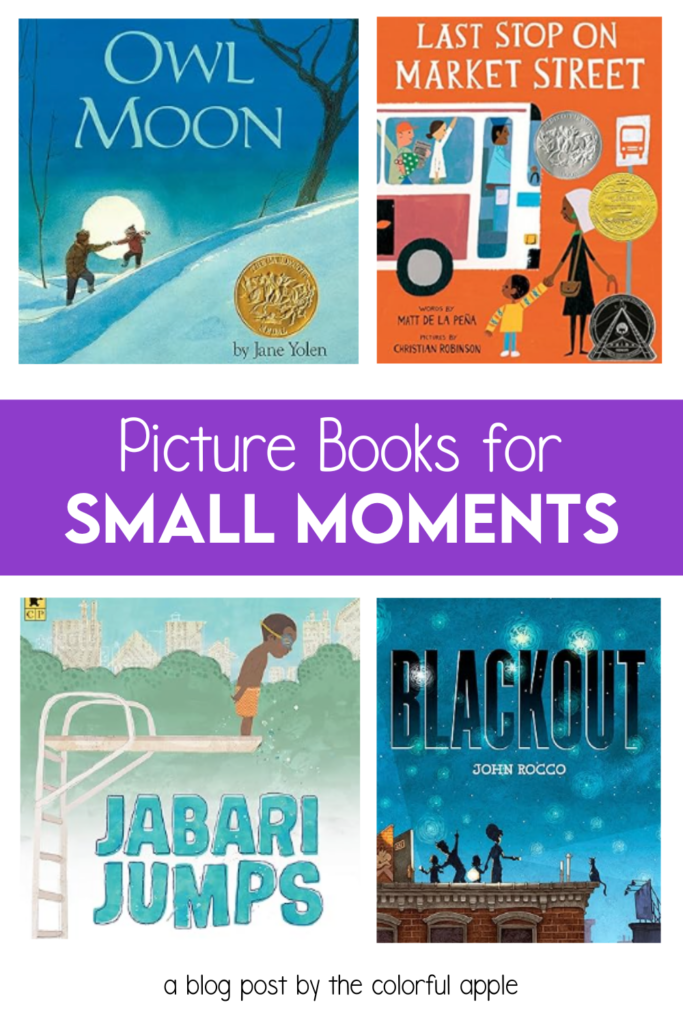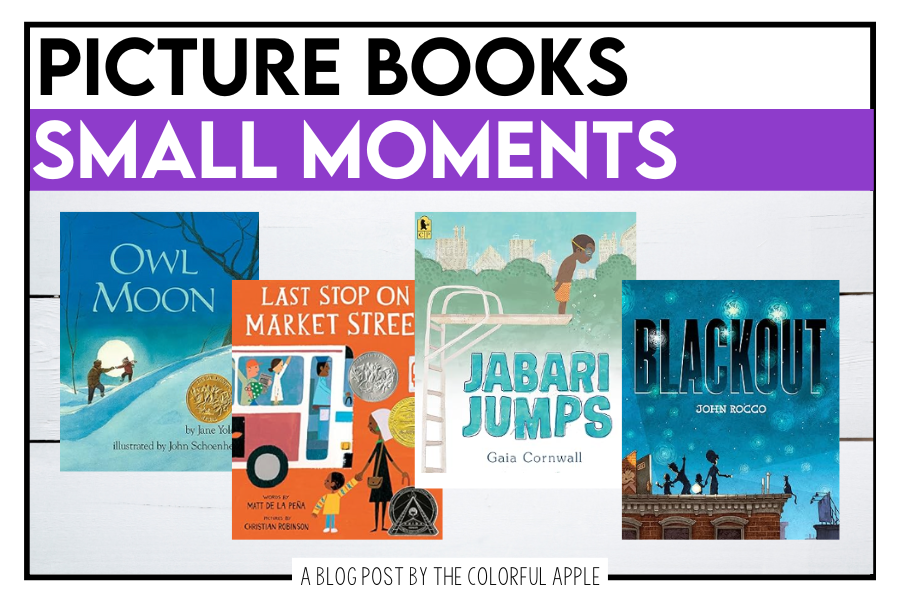
Picture books can be powerful tools for teaching writing. Let’s dive into some ways to use mentor texts to teach your students the art of writing small moments. Small moments are the heart and soul of narrative writing, and they help students focus on the details that make their stories come alive. Through interactive read-aloud lessons, we can use small moment mentor texts in writing.
I’m sharing all of these books on video as well! Check out the Small Moments Mentor Texts on my Youtube channel.
This post contains affiliate links. Read my full disclosure here.
The Power of Small Moments
Before diving into the interactive read-aloud lesson, let’s talk about what small moments are and why they matter. Small moments are the little snapshots of our lives that we can zoom in on and write about in detail. Instead of writing about an entire day at the beach, for example, we might choose to write about the exciting moment we caught our first wave. Small moments help students narrow their focus and create vivid, engaging stories that draw readers in.
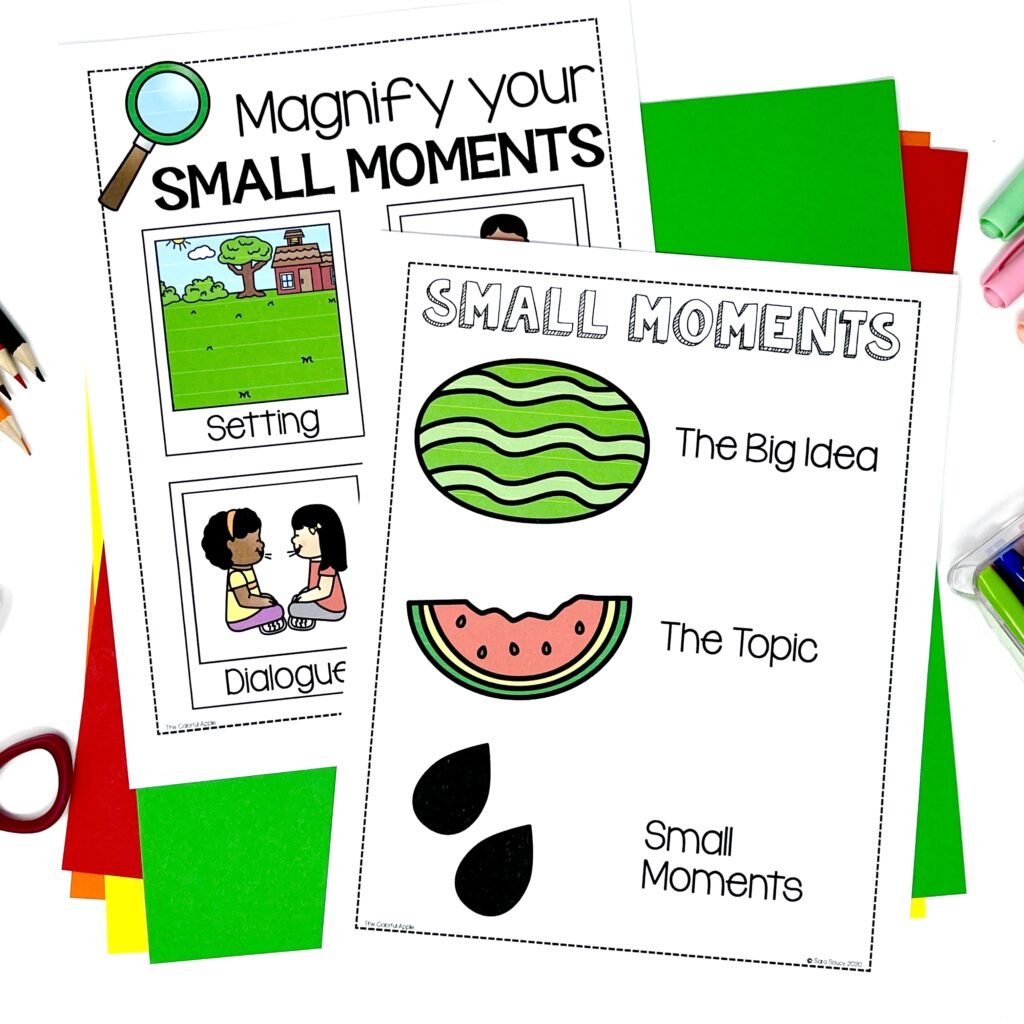
Small Moment Interactive Read-Aloud Lesson
Now, let’s break down how to conduct an interactive read-aloud lesson using the selected picture book:
- Introduce the Book: Begin by introducing the book and discussing the cover and title. Ask your students to predict what the story might be about based on these clues.
- Read Aloud: As you read the book aloud, pause at key moments that exemplify small moments. Point out how the author zooms in on a specific event or feeling, allowing the readers to experience it deeply.
- Discussion: After reading the book, engage your students in a discussion. Ask questions like, “What were the small moments in the story?” “How did the author make you feel like you were right there with the character?” “What details did the author include to help us see, hear, and feel the story?”
- Interactive Writing: Now, it’s time to do some interactive writing. Choose one of the small moments from the book and write it on chart paper or a whiteboard. Encourage students to help you recreate the moment by adding descriptive details. Discuss the importance of sensory details (sight, sound, touch, taste, and smell) in bringing a small moment to life.
- Independent Writing: Finally, have your students try their hand at writing their own small moments. Provide them with writing prompts or encourage them to choose their own special moments to write about. Remind them to use the techniques they observed in the picture book and during the interactive writing session.
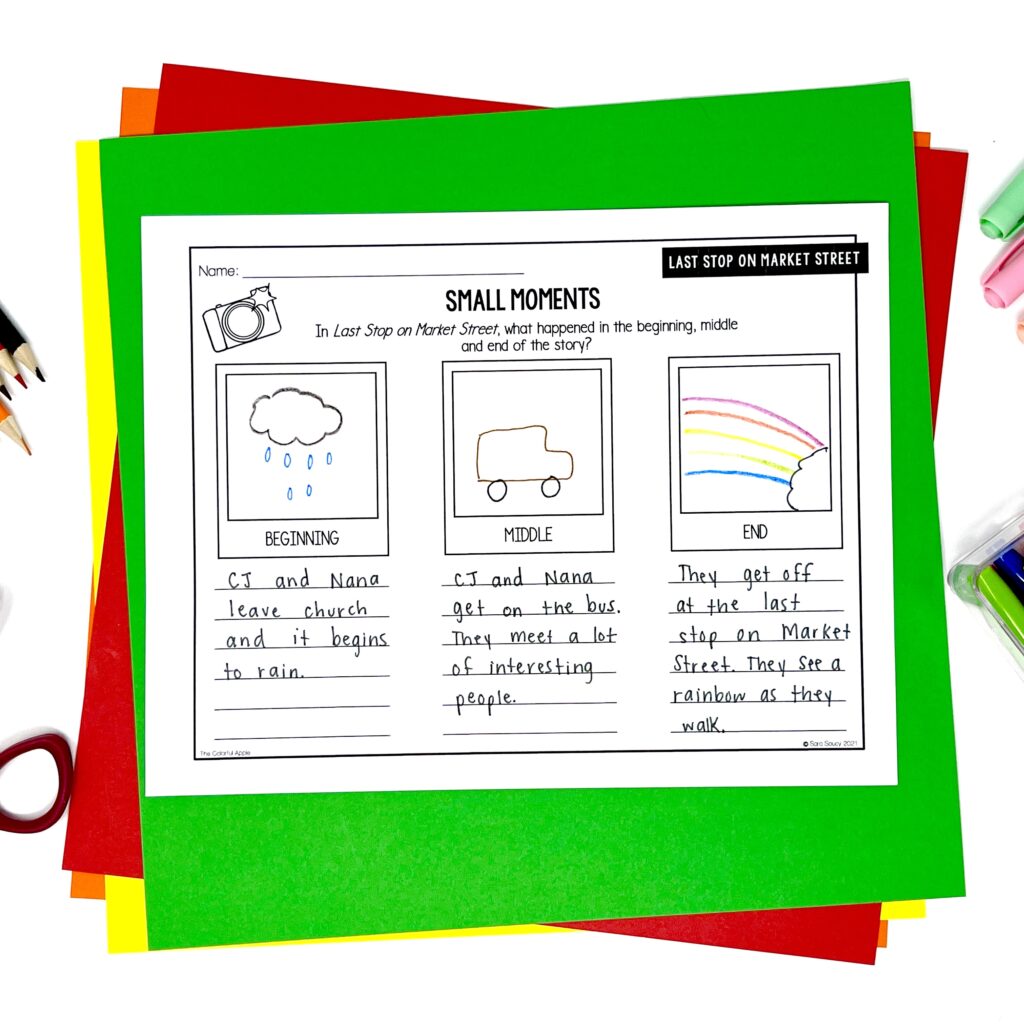
Grab the lesson plan for Last Stop on Market Street here.
Small Moments Mentor Texts
The first step in this interactive read-aloud lesson is choosing the perfect picture book. Look for a book that tells a story with a strong, clear small moment. Here are a few suggestions:
Last Stop on Market Street by Matt de la Pena
Last Stop on Market Street is definitely on my list of favorites. A story about a young boy riding on the bus with his grandmother to volunteer at a soup kitchen. The words and illustrations celebrate life’s little gems. It’s a story that reminds us to appreciate what we have and all that we can give. Your students will love the bright illustrations and the descriptive vocabulary.
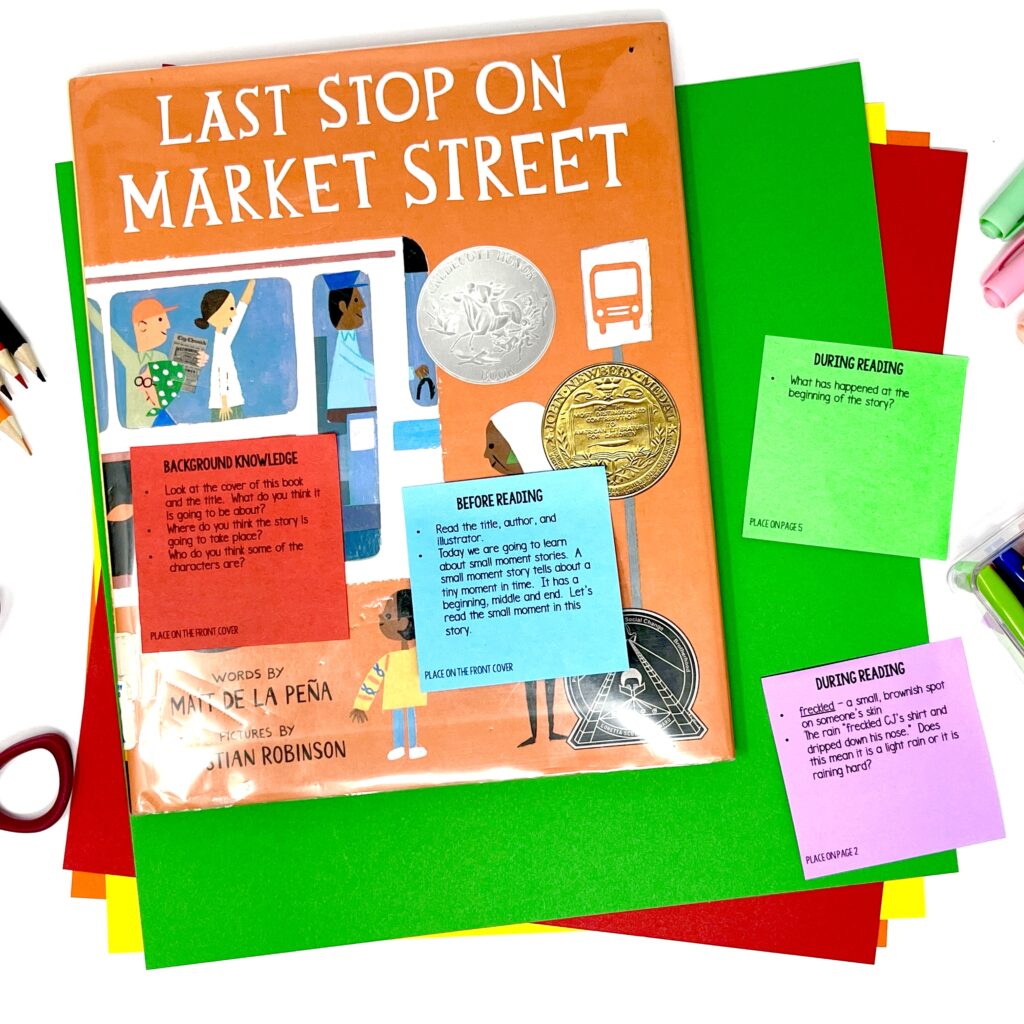
Grab the lesson plan for Last Stop on Market Street here.
The Snowy Day by Ezra Jack Keats
This is such an excellent book! It is about a young boy excited to wake up and see the snow. So, students get to travel on all his adventures as he travels around the city on this snowy day.
Students will love seeing his adventures and then sharing theirs! Teachers can even use this books to movies story before or after the first big snowfall.
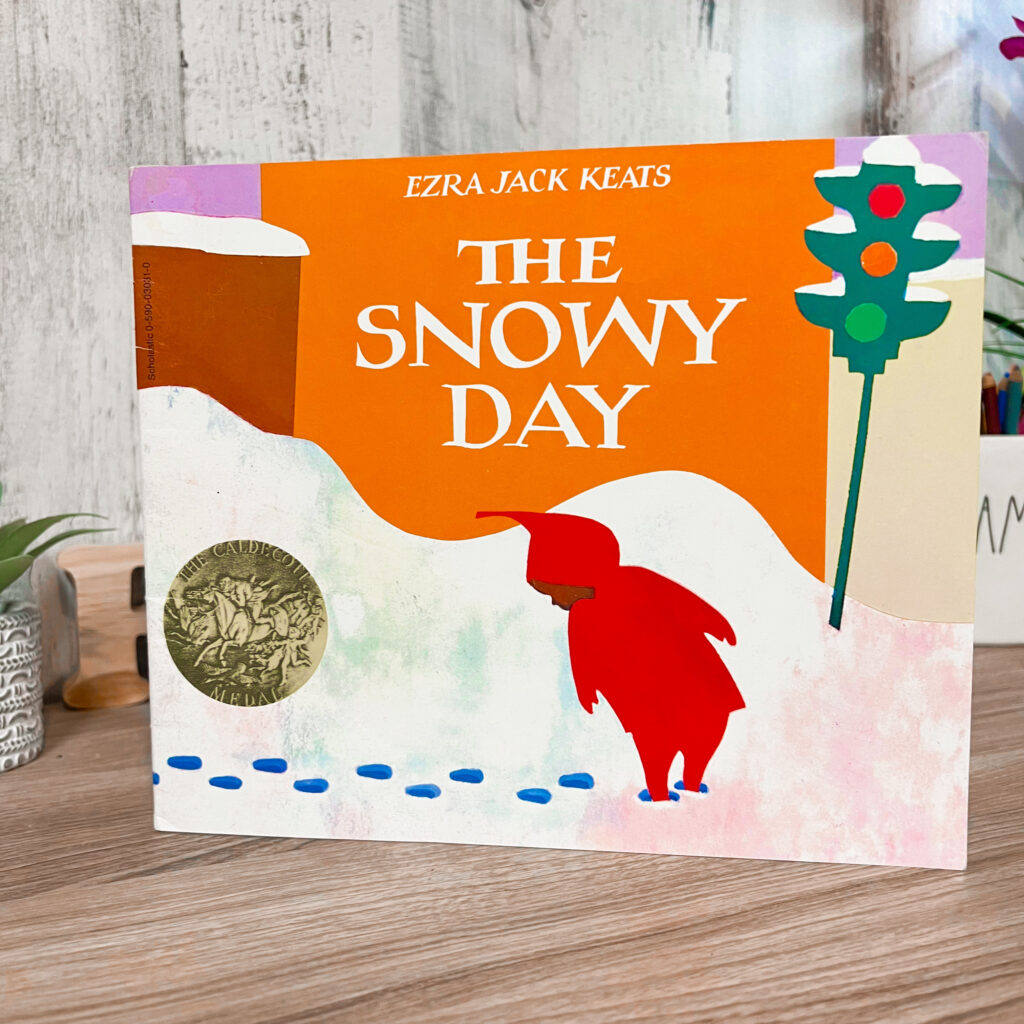
Owl Moon by Jane Yolen
Owl Moon is not necessarily a book about snow, but the feeling of snow definitely comes through. The young child describes the crunching of the snow and the taste of a wet scarf as they go owling in the woods at night. Beautiful imagery!
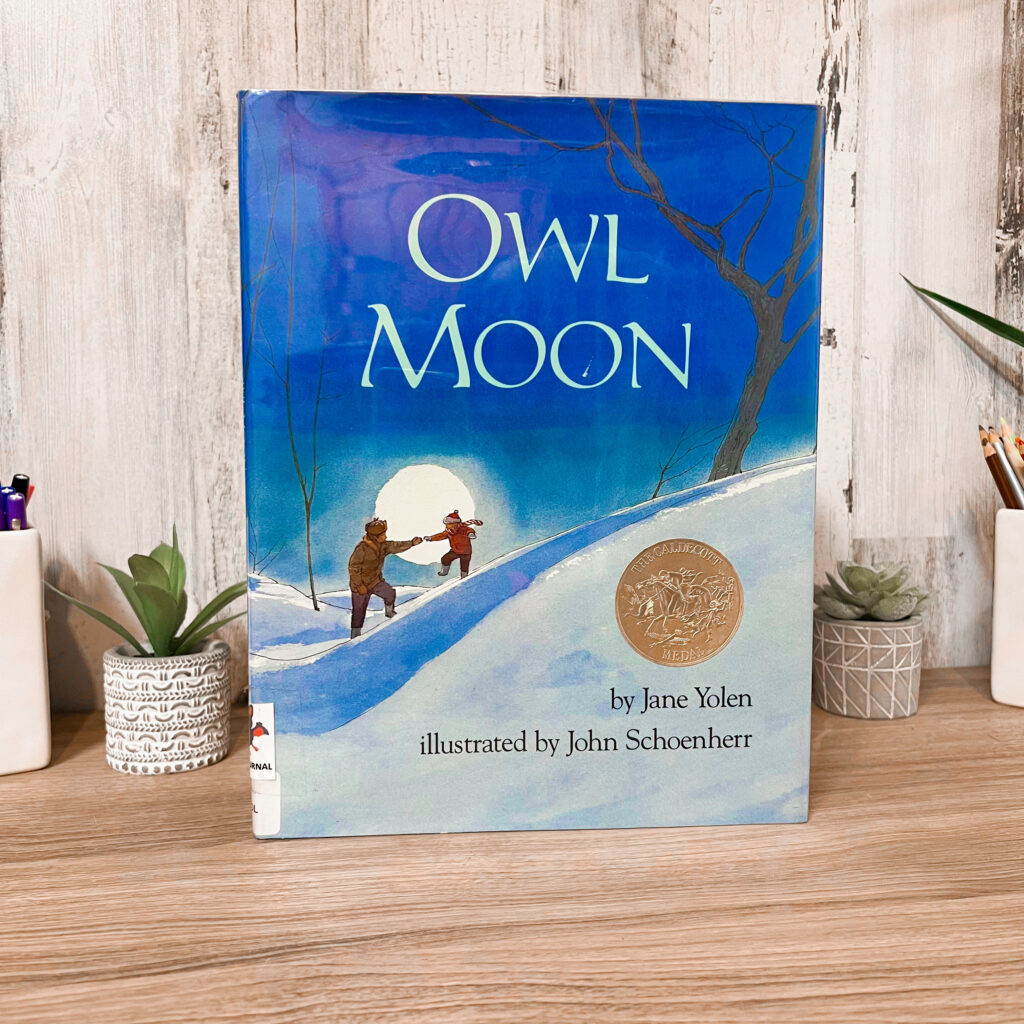
Fireflies by Julie Brinckloe
There is something truly magical about summer nights and the allure of lightning bugs. In Fireflies, a young boy captures a few. However, when they start to dim, he learns that he must set them free. In this book, readers feel the emotions of the boy – both when capturing the fireflies and when setting them free. A great picture book for teaching sensory details too!
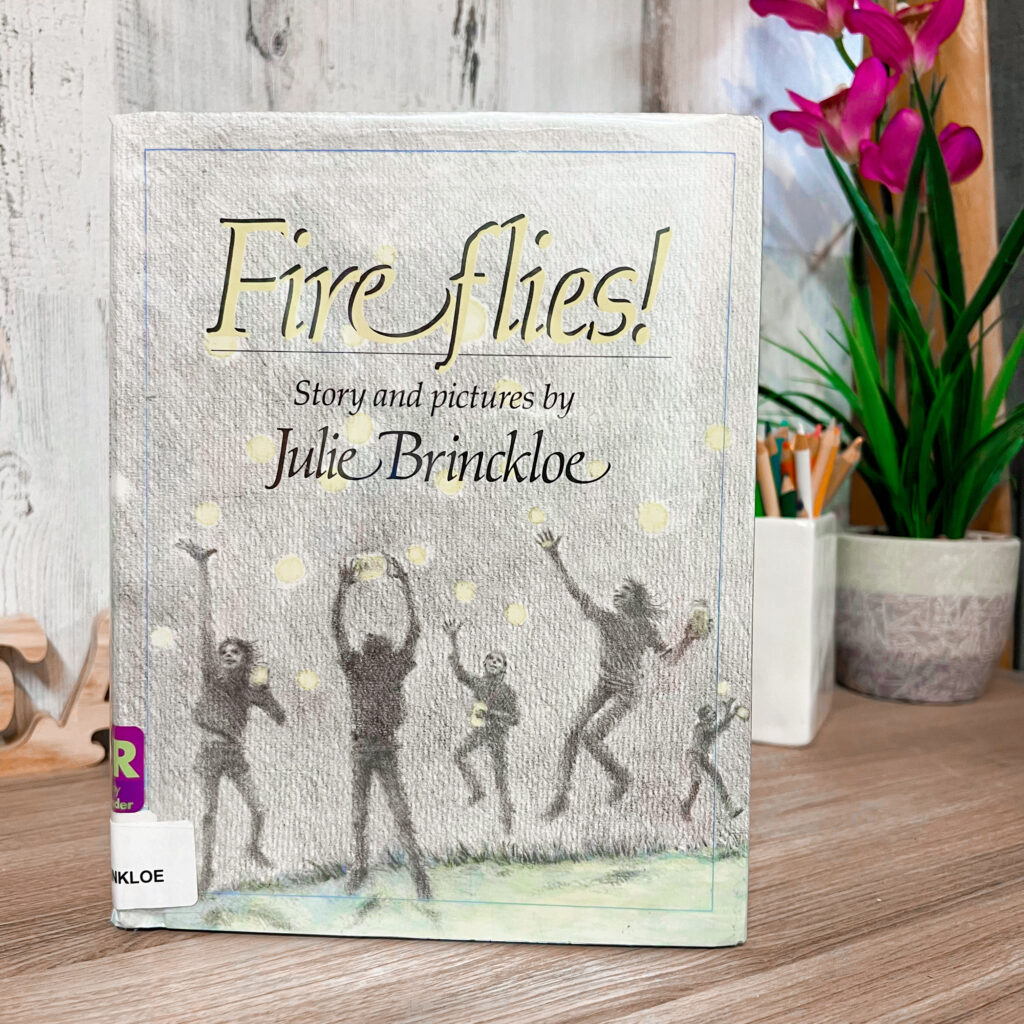
Blackout by John Rocco
One hot summer night in the city, all the power goes out. What’s a family to do? When they go up to the roof to escape the heat, they find the lights–in stars that can be seen for a change–and so many neighbors it’s like a block party in the sky! On the street below, people are having just as much fun–talking, rollerblading, and eating ice cream before it melts.
The boy and his family enjoy being not so busy for once. They even have time to play a board game together. When the electricity is restored, everything can go back to normal . . . but not everyone likes normal. The boy switches off the lights, and out comes the board game again.
Shortcut by Donald Crews
It’s getting late following a day of play, So seven children decide to take the shortcut home to Bigmama’s, even though that means walking along the train tracks when they know they should always take the road. The coast seems clear…
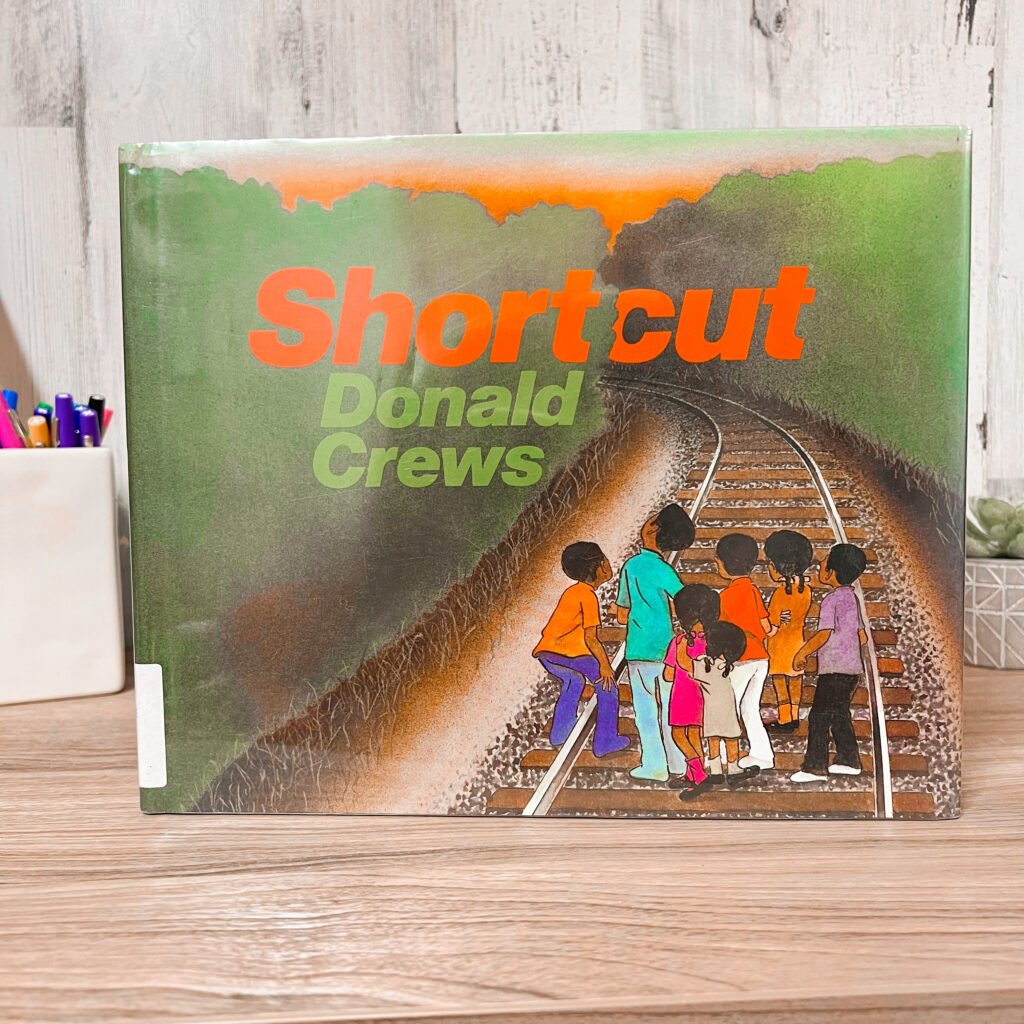
Hike by Pete Oswald
Hike is a great wordless picture book where a father and son take a stunning hike. This story reminds us of the importance of protecting and preserving the world around us. Hike celebrates the beauty of nature and the importance of getting out in it.
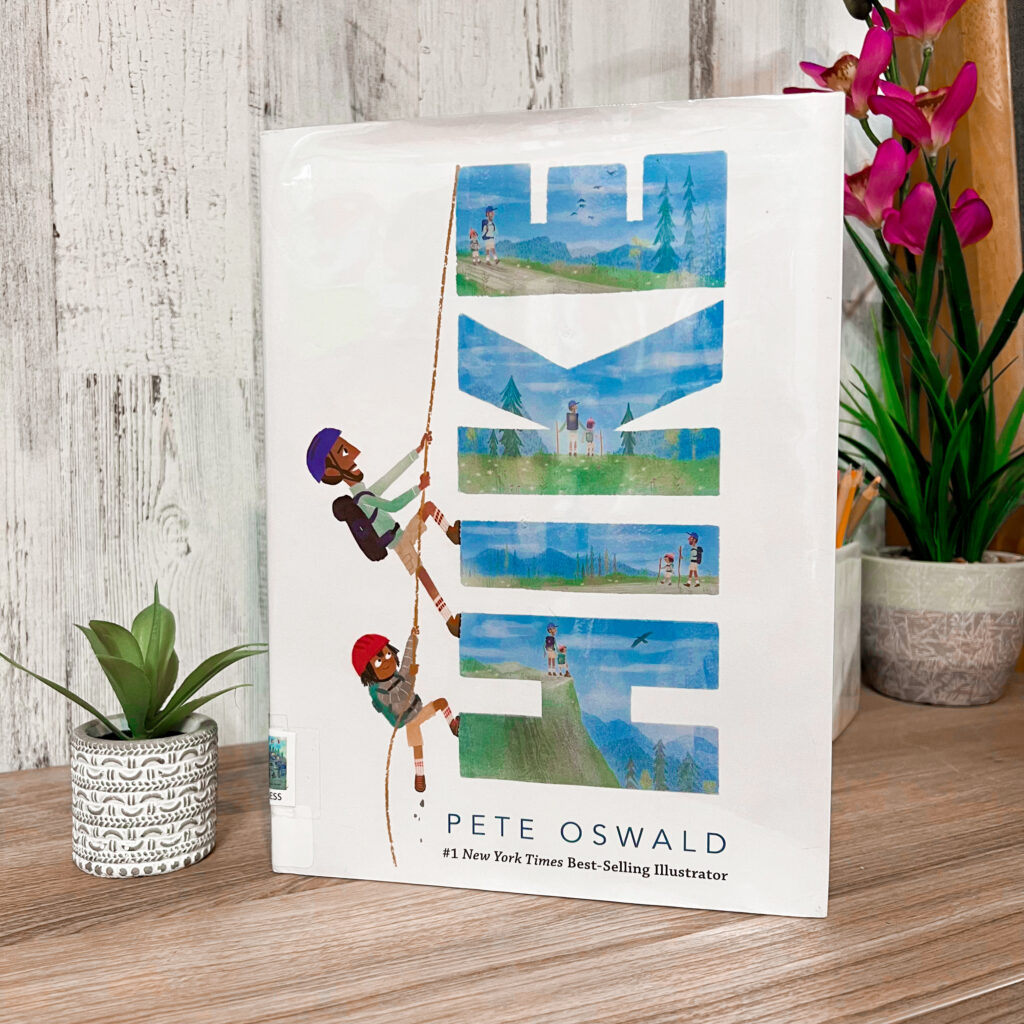
Jabari Jumps by Gaia Cornwall
Jabari Jumps is the perfect small moment mentor text. He heads to the town swimming pool, ready to jump off the high dive. We follow along as he overcomes his fears and finally takes the leap!

Freedom Soup by Tami Charles
Join the celebration in the kitchen as a family makes their traditional New Year’s soup — and shares the story of how Haitian independence came to be. Every year, Haitians all over the world ring in the new year by eating a special soup, a tradition dating back to the Haitian Revolution. This year, Ti Gran is teaching Belle how to make the soup — Freedom Soup — just like she was taught when she was a little girl.
Using picture books in your classroom to teach the concept of small moments can be a game-changer for your young writers. Interactive read-aloud lessons not only inspire creativity but also help students understand the power of detail in their writing.
By zooming in on small moments, students can write stories that are engaging, relatable, and filled with emotion. So, next time you’re looking to teach writing, reach for a picture book and let the magic of small moments unfold in your classroom.

Grab the lesson plan for Last Stop on Market Street here.
Listen on the Podcast
Save this Book List
Be sure to save this pin to your favorite read alouds board on Pinterest! You’ll be able to come back to these books when you are ready to read them aloud with your students.
